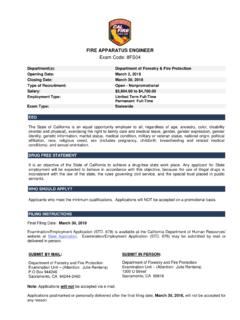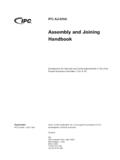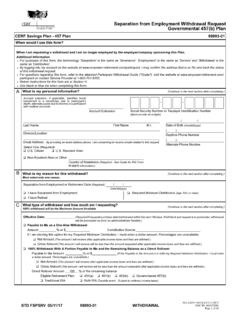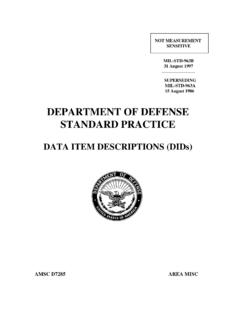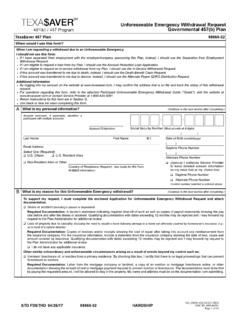Transcription of TECHNICAL RUBBER COURSE - Chicago Rubber …
1 MainJune COURSEM ixing TechnologyMixing Technology& Machinery& MachineryRobert DicksteinRobert DicksteinMainTopics Commonly used RUBBER Compounding machinery Basic mixing theory Intermeshing and tangential batch mixers Practical Aspects of Batch mixer operationMainMainTYPEG eneral AdvantagesDisadvantagesMILLSF irst Rubbercompoundingmachine(not generally aprimary mixerthey are usedas a post mixerforming device)- Very versatile- Broad range of shear capability- accepts all feed forms- good for short production runs- difficult to control- difficult to automate- batch to batch variation ( due toweighments, feeding ,&heat & shearhistory)- dirty operation- safety considerations- low output- varying power demand- labor intensiveBATCH MIXERSMost commonRubbercompoundingMachinery- accepts all feed forms- high output- can be automated- good for short production runs- long life expectancy- broad range of shear capability- varying power demand- batch to batch variation (mixer control & weighments)
2 - post mixer variable product heat history- capital intensive- need post mixer forming- can be labor intensiveCONTINUOUSMIXERSS pecialtyapplications- high output- energy efficient- ease of process optimization- easily automated- uniform product shear & heathistory- need free flowing feed (particulaterubber)- require sophisticated weigh & feedsystems- not applicable for short runs- difficult to clean- capital intensive- need post mixer formingTWIN SCREWEXTRUDERSN ewertechnologySpecialtyapplications- energy efficient- ease of process optimization- easily automated- geometry optimized for use- uniform product shear & heathistory- need free flowing feed(particulaterubber)
3 - require sophisticated weigh & feedsystems- not applicable for short runs- difficult to clean- capital intensive- configuration changes requiredPrimary Compounding MachineryMainCompounding s Quality ObjectivePRODUCT POTENTIALPROCESSABILITYQUALITY PRODUCTTHE PRODUCT MIX MUST EASILYBE FORMED INTO THE FINALPRODUCT SHAPEWHEN PROPERLY FABRICATED THEPART MUST MEET ALL PHYSICAL REQUIREMENTSMainProcess TechnologyProcess TechnologyCompound IngredientsCompoundingMachineryMainThe Mixing ProcessMainRaw Materials Polymer type age, uniformity & purity MW & MWD entanglements thermal &oxidative characteristics homogenization of single or multiple polymers(phase morphological concerns-compatibly) environmental and geometric affect of polymers filler type( extending,reinforcing,& reactive fillers)
4 Age,uniformity, purity,reactivity particle size and particle size distribution requirement to breakdown agglomerates or pellets the possible forming of agglomerates requirements for efficient filler/polymer interaction type of plasticizers ,protective additives,reactive chemicals age,uniformity, purity,reactivity lubricating affects of liquid and melting additives threshold temperature affects for incorporation maximum temperature limitationsTypical Material ConcernsMainREACTIVEDISPERSIVEHigh shearDISTRIBUTIVETYPES OF MIXINGMainBatch Mixing TechnologyMainHOPPERASSEMBLYCHAMBERRAMRO TORS(Tangential or Intermeshing)DROP DOORB asic Components of The Batch MixerBasic Components of The Batch MixerAIR or HYDRAULICCYLINDER(ram actuator)HOPPER COVERTHERMOCOUPLE INDROP DOOR OR END FRAME(indicated mix temperature)
5 Batch dischargingmechanismMixer motor drive& reduction setMainBatch Mixing Batch Mixing TechnologiesTechnologiesIntermeshingTang entialIntermix Mark 5 Banbury F series ST MainMachinery in ApplicationMachinery in ApplicationAREAS OF APPLICATION % OF INTERMIX BATCH MIXERS INAPPLICATION% OF BANBURY BATCHMIXERS IN APPLICATIONTIRE COMPOUNDS 5 57 TECHNICAL RUBBER GOODSie,SEALS,HOSE , AND CUSTOMMIXING 79 23 WIRE AND CABLE 7 3 FLOORING 3 4 PLASTICS COMPOUNDING 6 13 MainAreas of mixer applicationAreas of mixer applicationBanbury Banbury --high volume applicationshigh volume applications--easy to mix formulationseasy to mix formulations--sticky materialssticky materials multiple step mixing applicationsmultiple step mixing applications(especially final mix of high(especially final mix of highviscosity compounds)viscosity compounds)
6 Intermix -specialty RUBBER goods(low temperature compounding )-extreme quality applications reactive mixing applications (high viscosity) single step mixing applicationsIntermix Intermix &&BanburyBanbury --medium viscosity formulationsmedium viscosity formulations--general RUBBER goodsgeneral RUBBER goodsMainMain1 INTERMESHING ROTOR DESIGNINTERMESHING ROTOR DESIGNTANGENTIAL ROTOR DESIGN TANGENTIAL ROTOR DESIGN Selected Items of ComparisonSelected Items of Comparison Ram actuation(HYDRAULIC OR PNEUMATIC) Hopper door Ram or weight design Mixer sides Mixer rotor end plates Mixer rotors Drop door design Drop door latch mechanism Dust stopsMechanicalMainHydraulic hopper ActuationPotential Benefits Eliminates compressed air requirements Efficient application of high batch pressure Potential Increase of process repeatability due to the elimination of the variations in the plant air supply Potential reduction in plant operating expenses it allows position control and variation of pressure on the batch during the mixing cycleMainCYLINDER AIR PRESSURE-air pressure applied to thepiston in the cylinder forcingthe weight downBATCH or RAM
7 PRESSURE-pressure applied by the bottom of the weight on the batchBatch & Cylinder PressureBatch & Cylinder PressureMainBatch & Cylinder PressureBatch & Cylinder Pressure10203040506070809010001020304050 6070 Air cylinder PSIC ylinder Vs Batch Pressure (F-270 - 22 inch diameter air cylinder)BatchPSIMainBatch & Cylinder PressureBatch & Cylinder Pressure((hydraulic system for Fhydraulic system for F--270 mixer)270 mixer)Main BATCHBATCH AND AND CYLINDERCYLINDER PRESSUREPRESSUREPSI T(PSI ABOVE PISTON)PSI B( PSI BELOW PISTON)BATCH PSI( EFFECTIVE PRESSUREON BATCH)BATCH PSI= f (PSI T-PSI B) x AREA PISTONAREA WEIGHT01520304050600102030405060708090 TIME (SECONDS)PSI(CYLINDER)RESIDUE PSIBLOCKAGEBATCHPRESSURIZATIONSLOW PRESSURIZATIONMIXER AIR CYLINDER PERFORMANCE(assume area of piston = area of weight)( Batch pressurization time)AIR PRESSURE BELOW PISTONIN CYLINDERAIR PRESSURE ABOVE PISTONIN CYLINDERMainPSI T(PSI ABOVE PISTON)PSI B( PSI BELOW PISTON)BATCH PSI( EFFECTIVE PRESSUREON BATCH)BATCH PSI= f (PSI T-PSI B)x AREA PISTONAREA WEIGHT01520304050600102030405060708090 LegendPSI(top)PSI(B)PSI (B res.)
8 PSI ( )PSI (EFF-res)TIME (SECONDS)PSI(CYLINDER)RESIDUE PSIBLOCKAGEFASTPRESSURIZATIONSLOW PRESSURIZATIONMIXER AIR CYLINDER PERFORMANCEI ncreased pressurization time BATCHBATCH AND AND CYLINDERCYLINDER PRESSUREPRESSUREMainSelecting a Hydraulic or Pneumaticactuated ramTopics to be addressed Tangential Vs Intermeshing rotor mixer Consistency of air pressure to mixer Quality & quantity of supplied air Operating cost Environmental considerations System Maintenance costs Capitol investment Knowledge of system operating characteristicsMainMain1 INTERMESHING ROTOR DESIGNINTERMESHING ROTOR DESIGNTANGENTIAL ROTOR DESIGN TANGENTIAL ROTOR DESIGN Selected Items of ComparisonSelected Items
9 Of Comparison Ram actuation Hopper door Ram or weight design Mixer sides Mixer rotor end plates Mixer rotors Drop door design Drop door latch mechanism Dust stopsMechanicalMainThe ram when full down is an extension of the body bore( the bottom becomes a working surface)Intermix full down weight positionMainBanbury full down weight positionThe ram full down position is Elevated Positionis necessary for efficient ventingand material flow within themixing chamberMainMain1 INTERMESHING ROTOR DESIGNINTERMESHING ROTOR DESIGNTANGENTIAL ROTOR DESIGN TANGENTIAL ROTOR DESIGN Selected Items of ComparisonSelected Items of Comparison Ram actuation Hopper door Ram or weight design Mixer rotors Mixer rotor end plates Mixer sides Drop door design Drop door latch mechanism Dust stopsMechanicalMainIntermix Intermix Dispersive and Distributive MixingDispersive and Distributive MixingDispersive MixingDistributive
10 MixingMainIntermix rotor designs(increased fill factor and shear flow)NR 2NR 5 MainMixing Action Mixing Action Banbury Banbury DistributiveDispersiveEven speed or friction operationMainFF--Series Banbury MixersSeries Banbury Mixers(tangential mixers)(tangential mixers)Even speed RotorAlignmentsMainSTST / SN4T 4 wing / SK 2 wing/ SN4T 4 wing / SK 2 wingF series Banbury rotor typesF series Banbury rotor typesFF--Series BanburySeries Banbury MixersMixers(tangential mixers)(tangential mixers)WFTMainFeeding EfficiencyFeeding EfficiencyIntermix Intermix Vs. Banbury Vs.
